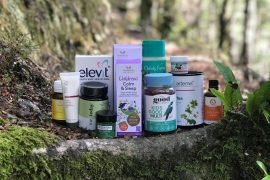By Sofia Potente
Did you know acid reflux affects about 1 in 5 people?
The modern approach to reflux is to prescribe Proton Pump Inhibitors (PPIs). In fact, they’re among the top 10 prescribed drugs in the world.
PPIs work by blocking the enzyme in the wall of the stomach that produces acid.
Why is reducing stomach acid a problem?
Because our stomach acid is CRITICAL for a healthy gut – we need it to absorb nutrients, digest and break down our food, and maintain a healthy ecosystem of bacteria.
The irony is the FDA recommends no more than three 14-day treatment courses of PPIs in a one year time period. Yet millions of people are prescribed PPIs for years with no plan made to transition off them.
Here are 3 side effects everyone should know about reflux medications. Studies have shown that use of PPIs result in:
1. Decreased nutrient absorption – Use of PPIs is linked to an increased risk of deficiencies in vitamin B12, vitamin C, calcium, iron, and magnesium.
2. Impaired digestion – the reduction of stomach acid via the use of PPIs leads to poor digestion, as stomach acid is necessary to digest food. Ironically, many of the side effects listed for PPIs are abdominal pain, diarrhea, flatulence and constipation.
3. Overgrowth of bad bacteria – sufficient stomach acid is needed to protect against bacterial infections and maintain a healthy intestinal pH. A 2013 study also found a significantly increased percentage of individuals with small intestinal bacterial overgrowth (SIBO) among PPI users. Those who used PPIs also had an increased chance of bacterial infections of Clostridium difficile, Campylobacter, Salmonella, Shigella, Listeria, and community-acquired pneumonia.
So what do we do instead? Firstly it’s important to understand the causes of reflux.
The top 3 triggers are:
- Certain foods – common food triggers include dairy, spicy foods, citrus fruits, tomato, sugar, alcohol, artificial sweeteners, soft drinks and wheat. Food intolerances can sometimes be challenging to work out as reactions can be delayed by up to 72 hours. In this case an IgG food intolerance test is helpful to identify hidden triggers. For information about food intolerance testing, click here (scroll to Package 4).
- Insufficient stomach acid and/or digestive enzymes – healthy pH levels of acid in the stomach and pancreatic enzymes are essential for strong digestive function and to break down our food adequately. These can be impaired by stress, poor food choices, age and certain medications.
- Gut microbiome imbalance – our digestive system needs a balance of both ‘good’ and ‘bad’ bacteria in the gut, particularly the large intestines. At times, the small intestines can be overgrown with ‘bad bacteria’, otherwise known as Small Intestinal Bacterial Overgrowth (SIBO). This can result in production of methane and hydrogen gases in the gut, along with symptoms such as burping, bloating, belching and acid reflux. Another hidden trigger can be helicobacter pylori – a bacterial infection that leads to reflux type symptoms.
So what do we do about it?
Here are 7 tips:
1. Remove the offending foods – use an IgG intolerance test if you have trouble working it out on your own (or if you suspect a food but need concrete evidence to motivate you to remove them from your diet). Enjoy a diet rich in fresh wholefoods – join my Healthy Gut Space Facebook Group to learn about the Healthy Plate Formula!











